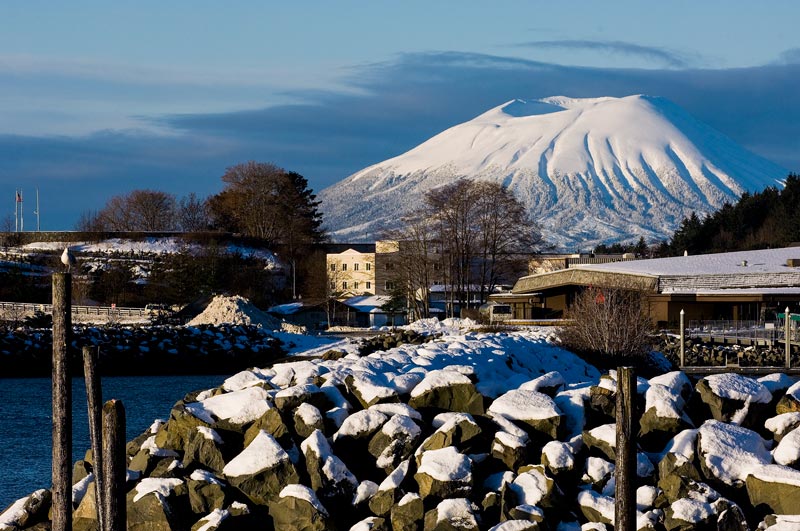Nestled deep at the Southern end of Kruzof Island, Alaska is a dormant volcano named Mount Edgecumbe. This is the only dormant volcano in southeast Alaska and is located about 16 miles from the city of Sitka. If you’re ready to venture out to Mt. Edgecumbe, you are looking at a 14.4-mile hike that includes some traffic and wildlife. Get your hiking gear ready from May until October, as this is the best time of year to hit the trails.
Visitors to Sitka often find Mt. Edgecumbe unique in itself, but this dormant volcano has many amazing facts that visitors may not be aware of.
Eruptions
There are currently three recorded eruptions for Mt. Edgecumbe. The dates are:
- 7620 BC
- 3810 BC
- 2220 BC
Now to the fun part! On April 1, 1974, a local prankster by the name of Oliver “Porky” Bickar set fire to hundreds of old tires in the crater. He had these tired flown in for an April Fools’ joke for everyone surrounding the area. Dark smoke rose from the crater and convinced the residents in Sitka that the volcano was erupting after all these years.
The hoax was soon revealed to the residents as they found the rim of the volcano spray-painted with the words “Aprils Fool” in 50-foot letters. It was reported that Bickar had been planning the prank for about four years and is listed as among the ten best April Fool hoaxes of all times.
Name Changes
Many people often wonder how the name Mt. Edgecumbe came to be. It all started when the indigenous Tlingit people considered the mountain sacred. They named the mountain L’ux in their language, which means “to flash’ or “blinking,” most likely because it was discovered while smoking or erupting.
Later in August of 1775, a Spanish explorer named Juan de la Bodega named the mountain Monta~na de San Jacinto to honor Saint Hyacinth.
The mountain then received the third and final name by Captain James Cook in May of 1778. During his third voyage, he named it Mt. Edgecumbe, which is presumed to be after a hill overlooking Plymouth Harbor, England. The name was later adopted by explorer George Vancouver and has become popular and the name of choice over the years.

The Great Ascent
The first ascent recorded was in 1805 by Captain Urey Lisianski of the Imperial Rusian Navy. Nowadays, many visitors can ascend to the top of the 7-mile trail. Take a trip through the taiga and muskeg before hitting a steep part of the trail and ending in the landscape of snow and red volcanic ash. The route’s difficulty is considered moderate for most hikers as it can get muddy and wet, and there are about 3 miles of steep climbing. Are you ready to try your hand at the trail?
Mt. Edgcumbe is available to the public all year long, despite the weather conditions. If you are looking to explore the coastline, hike the trails, shop the village and refresh in a nice bed and restaurant, then Sitka hotel is the place for you. Contact us today to book a room and plan the perfect getaway for you and a friend.



